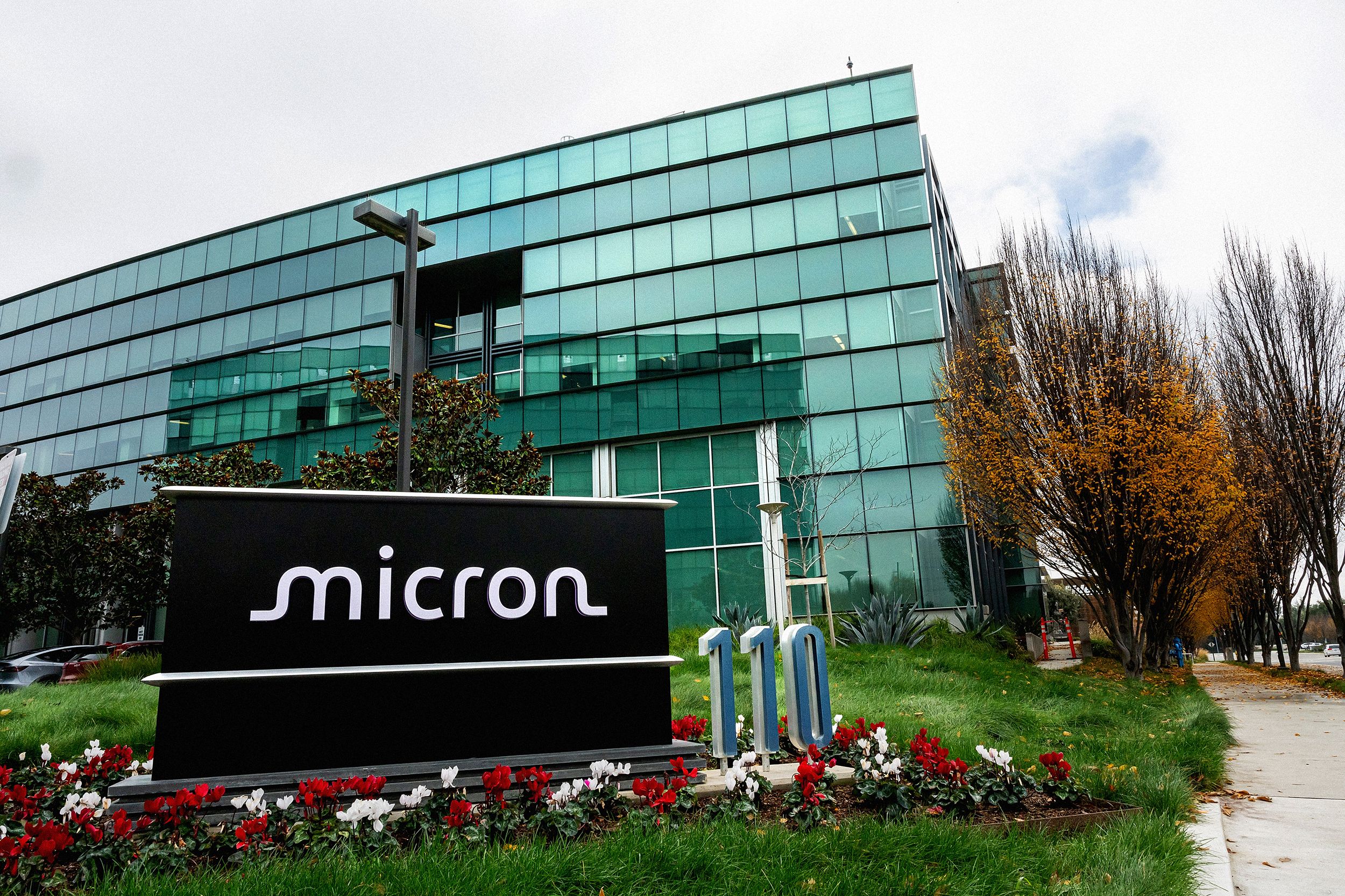Azalia King moved into an upstate New York home surrounded by sprawling cattle pastures around 1965, about the time that mass production of the world’s first microchips began. Now, 60 years later, the 91-year-old is on the verge of losing her home to make way for what could become the largest chipmaking complex in the US.
Local authorities threatened to exercise their power of eminent domain, or taking land for public benefit, to forcibly uproot King and proceed with construction on a $100 billion campus where US tech giant Micron plans to make memory chips for use in a variety of electronics. King’s home has been the lone remaining residence on the 1,400 acre plot of land, which previously included dozens of other homes.
On Friday, after a week of intense negotiations, dueling legal threats, and community protests, King’s family agreed to a deal with local officials to have her move, Onondaga County Executive Ryan McMahon announced. Terms of the agreement will not be available until the county’s Industrial Development Agency votes to finalize it, likely in mid-December. Earlier this year, the county agency offered $100,000, while the family countered for $10 million, the Syracuse Post-Standard reported.
“Both sides recognized the time was now,” McMahon, who became personally involved in the talks over the past few days, said during a livestreamed press conference on Friday. “This all is being driven by a national security project that will change this community for generations to come. These things are tough. Nobody wanted to be essentially where we were.”
Scott Lickstein, King’s attorney, tells WIRED her lawsuit against county authorities last week helped accelerate talks and that it was beneficial to all parties to make a deal. “She will be staying in the community,” Lickstein says. Several of King’s relatives did not respond to requests for comment on the deal.
Micron said it wants to break ground in Clay, north of Syracuse, next month. But the company can’t proceed with the project until King vacates her home. Already, it is two to three years behind schedule, with full chip production not expected until 2045.
The construction is part of a federal push started under the Biden administration to increase domestic production of computer chips and reduce the country’s reliance on Asian manufacturing. Federal, state, and local subsidies for the project could end up totaling around $25 billion, according to activists fighting some of the tax breaks. “You can’t accomplish having the historic investment and having that one house stay,” McMahon said last week. “Those two things can’t happen together.”
As the Trump administration’s pressure tactics and tariffs policies draw manufacturing back to the US, such land disputes could become more commonplace. Onondaga officials had struggled for decades to fill the giant plot of forested land in upstate New York, reportedly losing out on automotive, pharmaceutical, and tech companies until Micron stepped in, drawn by the subsidies and convenient access to electricity.
The project is awaiting some federal permits, and community members remain concerned about increased traffic and possible environmental impacts, including the displacement of endangered bats and the draining out of aquifers. But it’s King’s plight that has frustrated people in the region the most, says Gloria Keeler, who describes herself as a friend to one of King’s six children.
The government making King adjust to a new environment when she already gets “a little confused” at her current home is “just wrong,” Keeler tells WIRED, adding that King’s children are “all sick to their stomachs worrying about this.”
Micron did not respond to requests for comment for this story.
Legal Battle
Across the US, governments reserve the power of eminent domain to seize real estate and redeploy it for a greater purpose in exchange for fair compensation to owners. Comprehensive data on how often it is used is lacking, but King has been a target more than perhaps most Americans.
Around 1965, Onondaga County used the threat of seizure to force King and her husband, Glenn, out of their farm to make way for a power station, according to court papers. That’s how King ended up at her current residence on Caughdenoy Road, along the western border of Micron’s project.
During the dotcom boom, the couple faced seven years of additional county pressure to sell their land to allow for a semiconductor fab, court papers show. In 2005, they relented. The Kings sold their 47-acre property to the county in exchange for $330,750 and a license to live tax-free on 3.61 acres of the land until both of them were dead. The envisioned fab never materialized. King’s husband died in 2015.
Micron announced its New York project in October 2022, a megafab that would surpass the much-touted TSMC chip complex in Arizona. Current plans call for the first chips to ship in late 2030, about two years behind schedule. Displacing King has been a prerequisite. Her land is set to house parking garages and rain basins, project documents show.
In recent months, Onondaga County turned to state eviction and eminent domain laws to try to kick King out of her house no later than mid-January, under the threat of fines. Last Monday, King sued the county development agency in state court, contending that any forced move would upend her life and violate her lifetime contract.
King “merely wishes to live out her remaining years in her home, a place where she feels safe, comfortable and can have her family visit,” the lawsuit states, noting she has three dozen grandchildren or great-grandchildren. “Defendant is attempting to back out of the agreement … simply because plaintiff has lived longer than defendant anticipated … and the agreement has become inconvenient.”
In the wake of the lawsuit, McMahon told reporters that the Micron campus, which is expected to employ 9,000 people at its peak, simply had to become reality. “This is about literally changing lives—creating economic opportunity for kids and for adults that we just haven’t had,” he said. “If there was a way to have a house on a mega campus and have an individual safely stay there, we would have tried to facilitate that, and trust me, we have tried to facilitate that.”
He said officials made a fair and comprehensive offer to the family that addresses King’s concerns while still being responsible with taxpayer funds.
On Thursday, at a public hearing required under New York eminent domain law, dozens of people from as far as Buffalo and Boston protested the county’s efforts to move King, according to Keeler, the King family friend. King’s relatives also have said in public comments that she should not have to move.
Bob McNamara, deputy litigation director at the Institute for Justice, a national nonprofit that takes on eminent domain cases, says King had a chance of winning her case. “But you can see why, even armed with strong legal arguments, someone might not want to spend years in litigation against a well-heeled county government burning taxpayer dollars to try to tear down their house,” he says.
Most states have enacted laws aimed at limiting seizures to construction projects that are for public infrastructure and won’t just benefit a private corporation. New York, though, is an exception and an epicenter for some of the worst eminent domain abuses, McNamara says. “You couldn’t do this sort of Micron taking in Texas. Why are we letting New York officials get away with this?”
He and other legal scholars studying eminent domain contend that governments don’t need to resort to displacing residents, especially when history shows that numerous projects never delivered on their initial promises. “Our results provide no evidence that eminent domain generates the economic benefits that are usually anticipated,” says Ronit Levine-Schnur, a law professor at Tel Aviv University, citing her upcoming paper examining seizures in New York City.
In Onondaga, some residents are skeptical that the bet on Micron will pay off. But they aren’t all waiting around to see how it plays out. Keeler says she moved to neighboring Oswego County in September due in large part to the expected construction and traffic chaos stemming from the Micron project. “We’re far from it now,” she says. Soon, King will be too.



